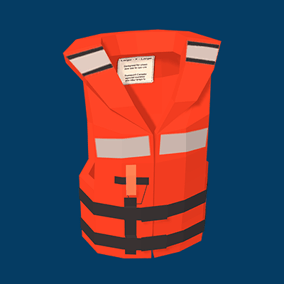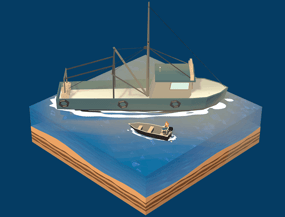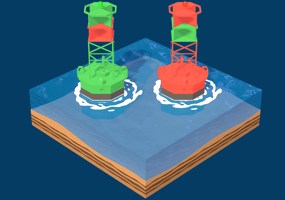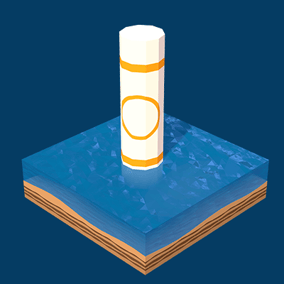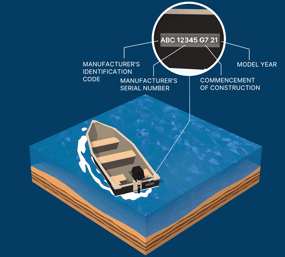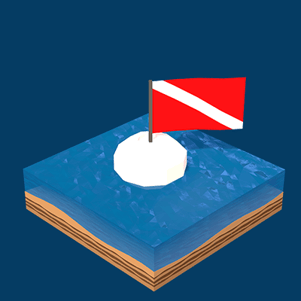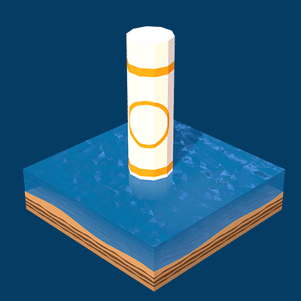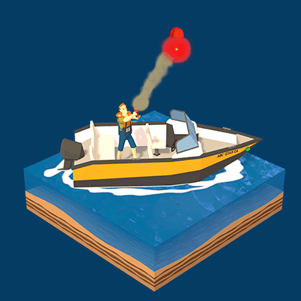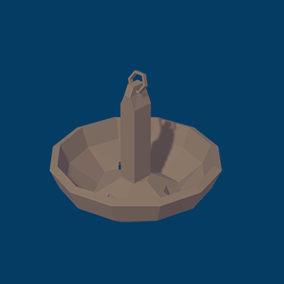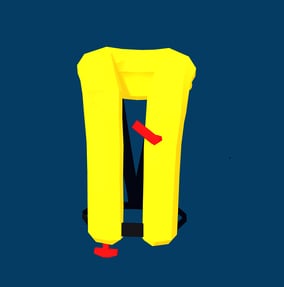Boating license Practice Test with Answers - USA You are viewing the USA test
Preparing for your boater exam in the United States means understanding navigation rules, safe operation, emergency procedures, and federal/state regulations.
Test your knowledge for free with our practice exam. To see the correct answer, simply click on the image that represents the right choice.
The following practice test includes sample questions similar to those found in official boating safety course — perfect practice as you prepare to get your boating license.”
Which picture represents the stern?

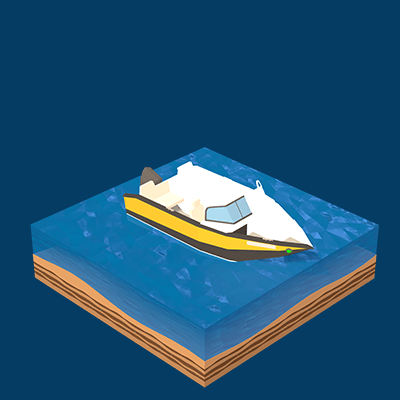

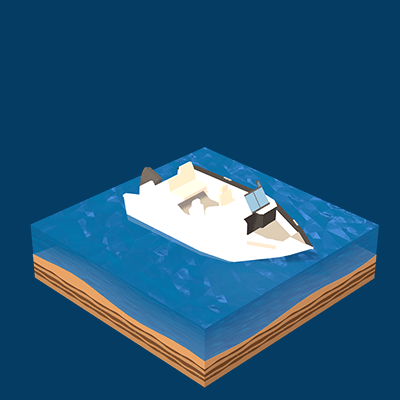
Congratulations, good answer!
The stern is the rear part of the boat.
Sorry, wrong answer.
The stern is the rear part of the boat.
Which picture represents the masthead light ?

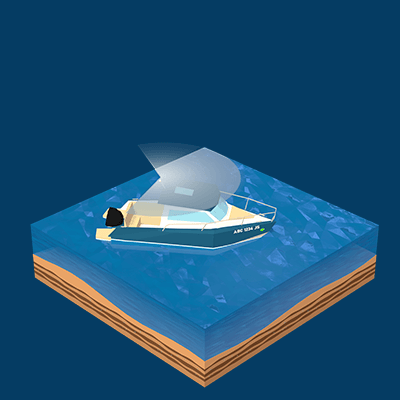
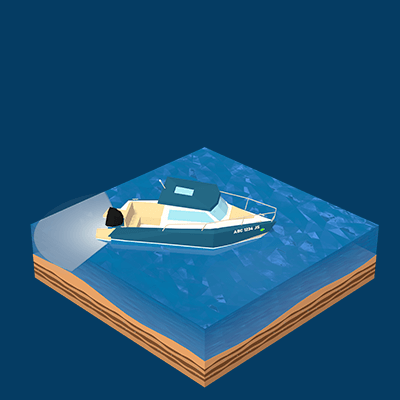

Congratulations, good answer!
The masthead light is a white light projecting towards the front of the boat.
Sorry, wrong answer.
The masthead light is a white light projecting towards the front of the boat.
The HIN (Hull Identification Number)
The certificate of ownership
The capacity plate
The registration
Congratulations, good answer!
The Hull Identification Number (HIN) is the boat’s serial number. Boats built after 1972 must have a Hull Identification Number (HIN) permanently attached to the transom on the starboard side above the waterline.
Sorry, wrong answer.
The Hull Identification Number (HIN) is the boat’s serial number. Boats built after 1972 must have a Hull Identification Number (HIN) permanently attached to the transom on the starboard side above the waterline.
Which is the proper route that the boat must take?

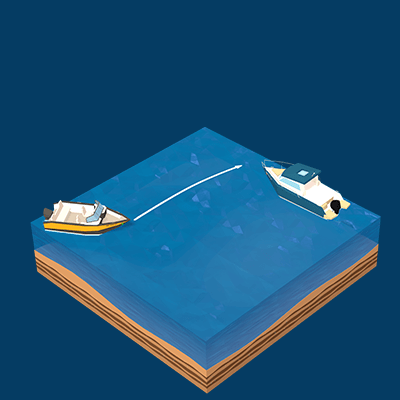
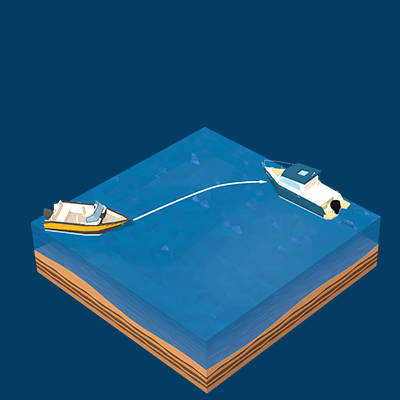

Congratulations, good answer!
As a give-way vessel, the boat is directed to keep out of the way of the other boat, which is a stand-on vessel, by taking early and substantial action to keep well clear.
Sorry, wrong answer.
As a give-way vessel, the boat is directed to keep out of the way of the other boat, which is a stand-on vessel, by taking early and substantial action to keep well clear.
Which illustration represents an information buoy among the following?
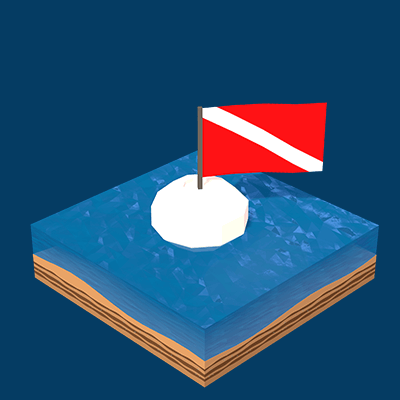
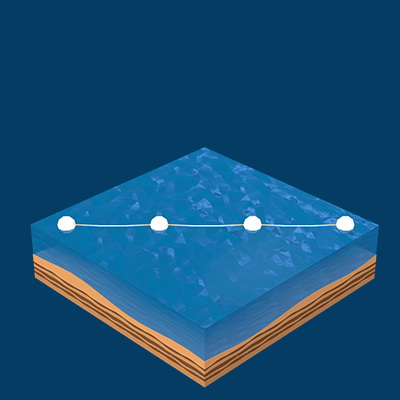
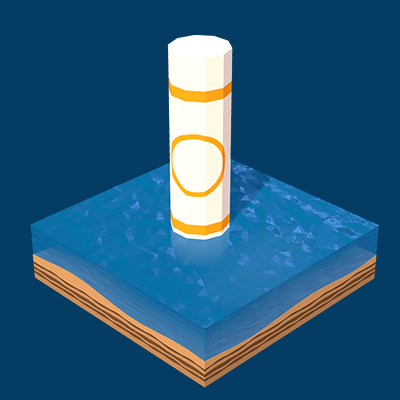
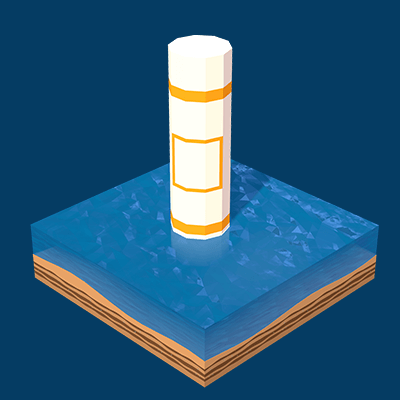
Congratulations, good answer!
The information buoy is the fourth one. It is white, with an orange, open-faced square symbol on two opposite sides and two orange horizontal bands, one above and one below the square symbols.
Sorry, wrong answer.
The information buoy is the fourth one. It is white, with an orange, open-faced square symbol on two opposite sides and two orange horizontal bands, one above and one below the square symbols.
Which illustration represents an exclusion buoy among the following?
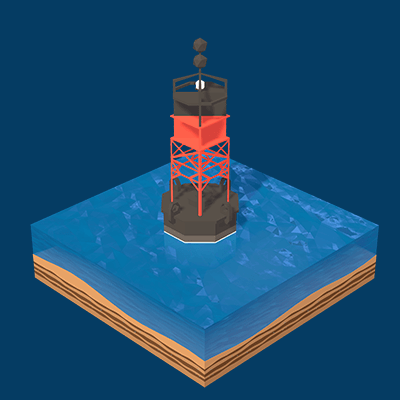

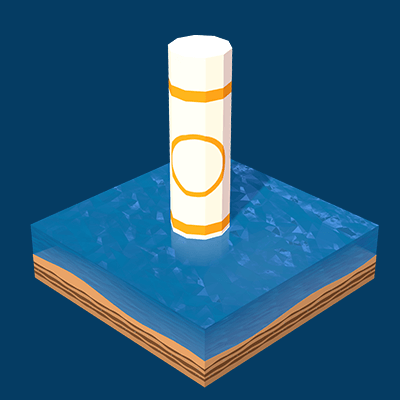

Congratulations, good answer!
The exclusion buoy is the fourth one. The explanation may be placed outside the crossed diamond shape, such as dam, rapids, swim area, etc.
Sorry, wrong answer.
The exclusion buoy is the fourth one. The explanation may be placed outside the crossed diamond shape, such as dam, rapids, swim area, etc.
A power-driven vessel shall keep out of the way of a sailing vessel.
TRUE
FALSE
Congratulations, good answer!
TRUE. As a stand-on vessel, the sailing vessel has the right of way on the power-driven vessel (give-way vessel). The sailing vessel shall maintain her course and speed.
Sorry, wrong answer.
TRUE. As a stand-on vessel, the sailing vessel has the right of way on the power-driven vessel (give-way vessel). The sailing vessel shall maintain her course and speed.
When a boat capsizes or is submerged, should you stay with the boat or try to reach the shore as quickly as possible?

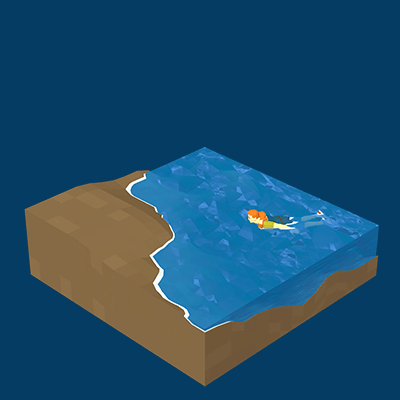
Congratulations, good answer!
If you should capsize, it may be safer to stay with the floating boat than try to swim to shore. Staying with the boat also provides an easier object for rescuers to see. Take a head count to make sure everyone is there, don life jackets, check for injuries and stay with the boat.
Sorry, wrong answer.
If you should capsize, it may be safer to stay with the floating boat than try to swim to shore. Staying with the boat also provides an easier object for rescuers to see. Take a head count to make sure everyone is there, don life jackets, check for injuries and stay with the boat.
Which picture represents the starboard side ?



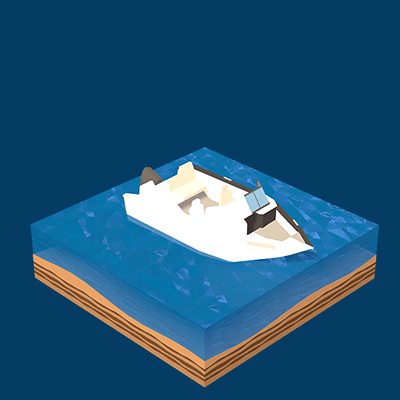
Congratulations, good answer!
The starboard side is the right side of a boat.
Sorry, wrong answer.
The starboard side is the right side of a boat.
To who should you leave a float plan before getting underway?
The USCG
The local police
A responsible person
The sheriff's office
Congratulations, good answer!
Remember to communicate your float plan with a responsible person such as a family member or a friend. As well, during the trip, update your float plan in order to prevent unnecessary emergency operations.
Sorry, wrong answer.
Remember to communicate your float plan with a responsible person such as a family member or a friend. As well, during the trip, update your float plan in order to prevent unnecessary emergency operations.
Which picture is the graphical representation of a body of water that provides information on depths, traffic lanes and buoys.


Congratulations, good answer!
Charts are graphic representations depicting areas of water, depicting the depths, underwater hazards, traffic routes, aids to navigation and adjacent coastal areas.
Sorry, wrong answer.
Charts are graphic representations depicting areas of water, depicting the depths, underwater hazards, traffic routes, aids to navigation and adjacent coastal areas.
TRUE
FALSE
Congratulations, good answer!
FALSE. A PFD becomes void if it has been repaired or altered; therefore, it is no longer usable and must be replaced and discarded.
Sorry, wrong answer.
FALSE. A PFD becomes void if it has been repaired or altered; therefore, it is no longer usable and must be replaced and discarded.
Which of the 4 types of pyrotechnic devices must be used only in daylight?
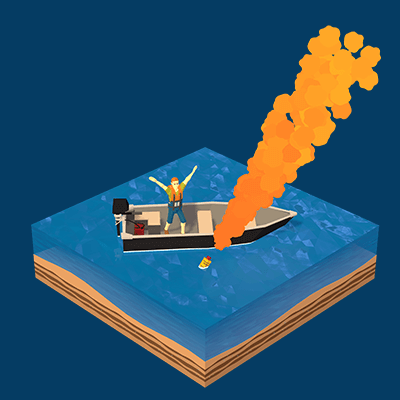
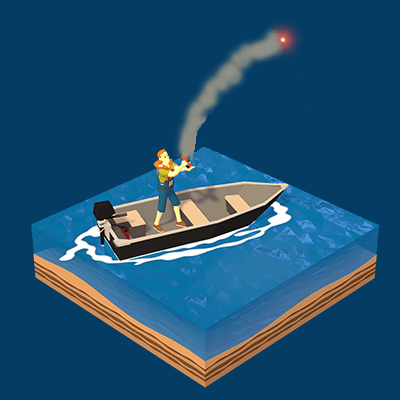
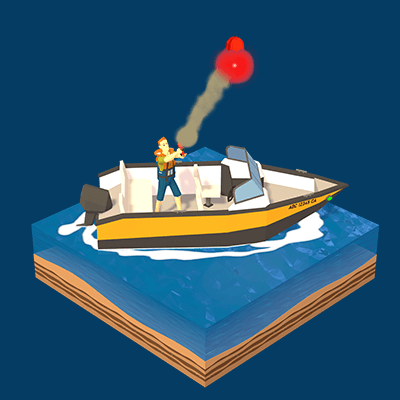

Congratulations, good answer!
The pyrotechnic orange smoke, hand-held or floating, may be used only in daylight.
Sorry, wrong answer.
The pyrotechnic orange smoke, hand-held or floating, may be used only in daylight.
What type of boat uses yellow lights as navigation light?
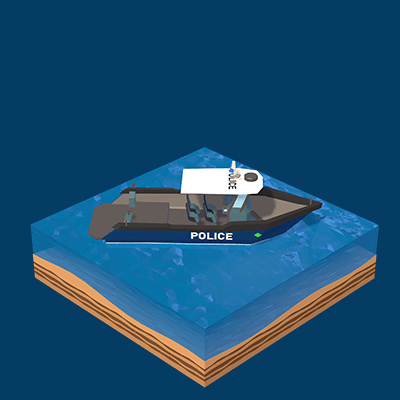
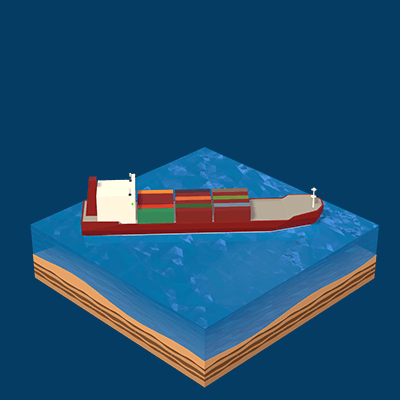
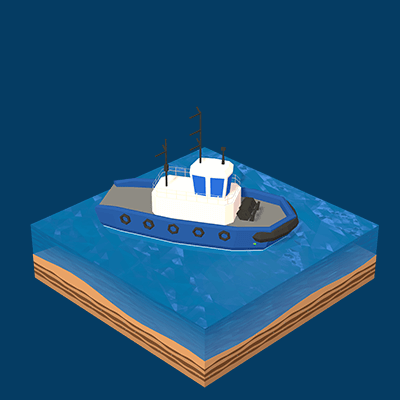

Congratulations, good answer!
If you see yellow lights or a flashing yellow light, stay away, it is a towing vessel with an object in tow.
Sorry, wrong answer.
If you see yellow lights or a flashing yellow light, stay away, it is a towing vessel with an object in tow.
What should we be prepared to show immediately to avoid a collision while navigating at night in a canoe or kayak?
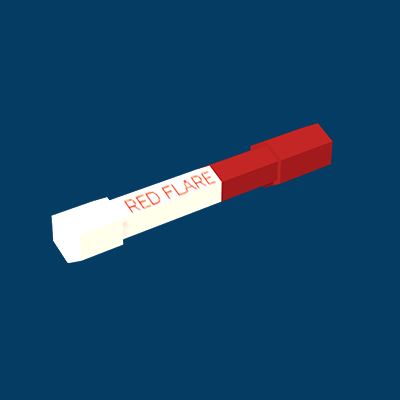

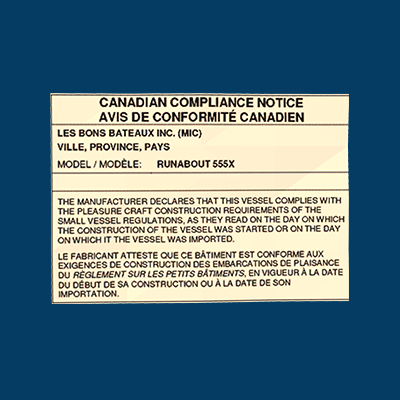
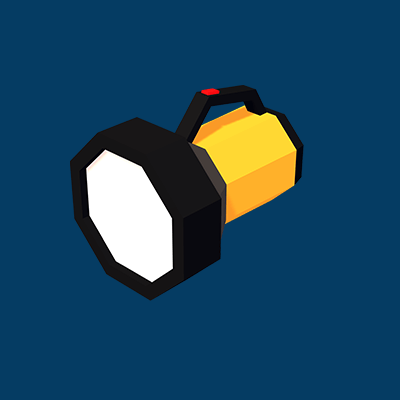
Congratulations, good answer!
A canoe or kayak may display the lights prescribed for sailing vessels, but if not, must have ready at hand an electric torch or lighted lantern (flashlight) showing a white light to be displayed in sufficient time to prevent collision.
Sorry, wrong answer.
A canoe or kayak may display the lights prescribed for sailing vessels, but if not, must have ready at hand an electric torch or lighted lantern (flashlight) showing a white light to be displayed in sufficient time to prevent collision.
What item is not displayed on a capacity plate?
The maximum carrying weight
The boat's top speed
The maximum persons capacity
The maximum horsepower recommended
Congratulations, good answer!
The capacity plate displays three important items: the maximum persons capacity, the maximum carrying weight - persons, motor & gear (pounds), and the maximum horsepower recommended for the boat.
Sorry, wrong answer.
The capacity plate displays three important items: the maximum persons capacity, the maximum carrying weight - persons, motor & gear (pounds), and the maximum horsepower recommended for the boat.
Which buoy marks an area where boating is restricted?

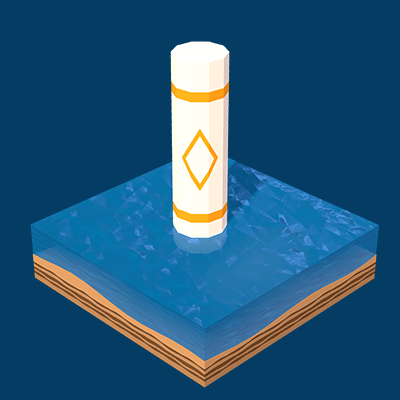


Congratulations, good answer!
The control buoy (the first illustration) fits this definition. Type of control is indicated in the circle, such as slow, no wake, anchoring, etc.
Sorry, wrong answer.
The control buoy (the first illustration) fits this definition. Type of control is indicated in the circle, such as slow, no wake, anchoring, etc.
Inboard engines
Outboard engines
Stern drive
Jet drives
Congratulations, good answer!
Jet drives are usually inboard engines that take in water that flows through a pump powered by an impeller impeller. PWCs are usually equipped with a jet drive unit. These propulsion systems do not have propellers, which are a potential danger to people in the water and to marine life. The water is then discharged at high pressure through a nozzle, propelling the boat forward.
Sorry, wrong answer!
Most recreational boats in the United States use outboard engines and are less than twenty feet in length.
The following symptoms are related to which condition: slow pulse, confusion, drowsiness, lack of coordination?
Insomnia
Heat stroke
Hypothermia
Carbon monoxide poisoning
Congratulations, good answer!
These symptoms are related to hypothermia.
Sorry, wrong answer.
These symptoms are related to hypothermia.
Which image demonstrates the best practices to have when a diving operation takes place from aboard a pleasure craft?
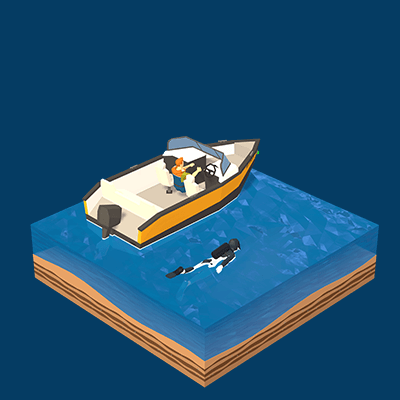
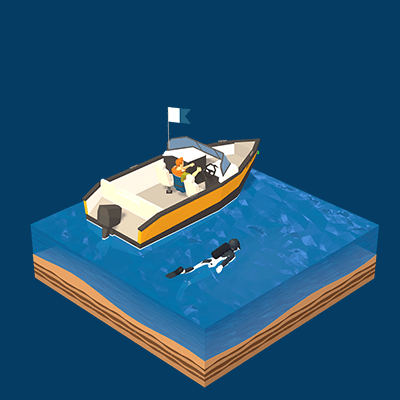


Congratulations, good answer!
The boat must display Flag A (blue and white). However, during diving operations you must install a diving flag in the water. It is Flag A, red and white. It marks an area where scuba or other such diving activity is taking place. It is white, and is mounted by a red flag with a white diagonal stripe, extending from the tip of the hoist to the bottom of the fly.
Sorry, wrong answer.
The boat must display Flag A (blue and white). However, during diving operations you must install a diving flag in the water. It is Flag A, red and white. It marks an area where scuba or other such diving activity is taking place. It is white, and is mounted by a red flag with a white diagonal stripe, extending from the tip of the hoist to the bottom of the fly.
Isolated danger buoy
Port buoy
Bifurcation buoy
Starboard buoy
Congratulations, good answer!
This buoy is a starboard hand buoy. It must be kept on the right side of the pleasure craft when heading upstream.
Sorry, wrong answer
This buoy is a starboard hand buoy. It must be kept on the right side of the pleasure craft when heading upstream.
Which type of anchor has less holding power and should only be used on small, lighter weight boats?

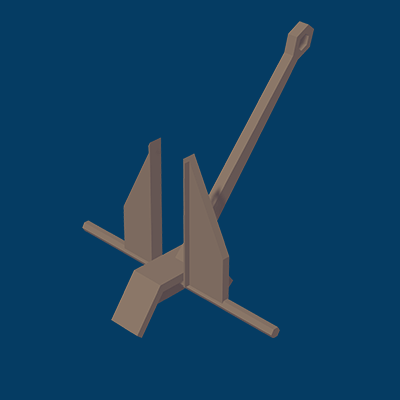
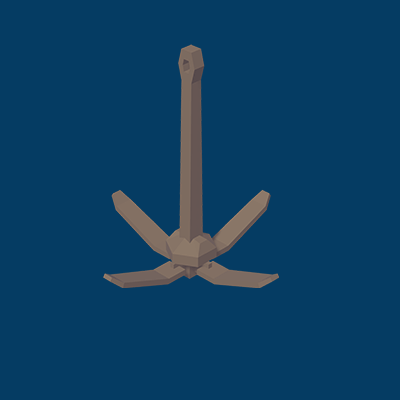
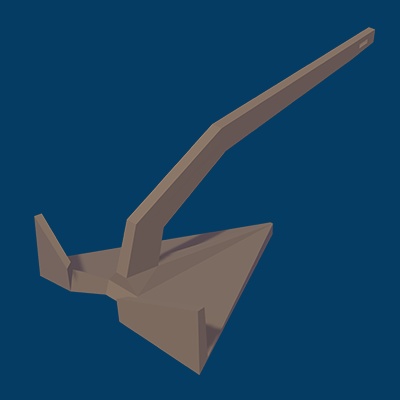
Congratulations, good answer!
The correct answer is the mushroom anchor. A mushroom anchors do not have the holding power of a fluke or plow anchor and should only be used on small, lighter weight boats. A local marine supply store can help you select the proper anchor for your boat and for the waters in which you will be boating.
Sorry, wrong answer.
The correct answer is the mushroom anchor. A mushroom anchors do not have the holding power of a fluke or plow anchor and should only be used on small, lighter weight boats. A local marine supply store can help you select the proper anchor for your boat and for the waters in which you will be boating.
Conditions of visibility and traffic density
The draft in relation to the available depth of water and the manoeuvrability of the vessel
Conditions of wind, sea and current, and the proximity of navigational hazards
All of the above
Congratulations, good answer!
All these answers are correct. Every vessel shall at all times proceed at a safe speed so that you can take proper and appropriate action to avoid collision, and be able to stop in a safe distance, and appropriate to the prevailing circumstances and conditions.
Sorry, wrong answer.
All these answers are correct. Every vessel shall at all times proceed at a safe speed so that you can take proper and appropriate action to avoid collision, and be able to stop in a safe distance, and appropriate to the prevailing circumstances and conditions.
Class A
Class B
Class C
Class D
Congratulations, good answer!
The right answer is class B type fire extinguisher.
Sorry, wrong answer.
The right answer is class B type fire extinguisher.
What does this image represent?

An HIN (Hull Serial Number)
A proof of registration
A compliance notice
A validation decal
Congratulations, good answer!
The right answer is The HIN (Hull Serial Number).
Sorry, wrong answer.
The right answer is The HIN (Hull Serial Number).
For navigation lights requirements, sailing vessels less than 7 meters may carry an electric torch or lighted lantern showing a white light to be displayed in sufficient time to prevent collision.
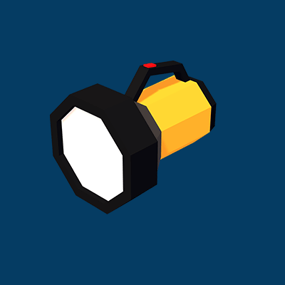
TRUE
FALSE
Congratulations, good answer!
TRUE. Watertight flashlights may also qualify as navigation lights on kayak and canoe.
Sorry, wrong answer.
TRUE. Watertight flashlights may also qualify as navigation lights on kayak and canoe.
Junction markers
Alignment markers
Daybeacons
Safe water markers
Congratulations, good answer!
When entering from seaward you may find two channels which separate and go in different directions. A junction marker uses its top color to show you the primary channel. This is represented by a Red and Green buoy. You use the top color and shape as if it were a stand alone marker if you want to follow the primary channel.
Sorry, wrong answer.
When entering from seaward you may find two channels which separate and go in different directions. A junction marker uses its top color to show you the primary channel. This is represented by a Red and Green buoy. You use the top color and shape as if it were a stand alone marker if you want to follow the primary channel.
It is important to keep metal and/or electrical devices at a distance from the magnetic compass because it could display inaccurate information.
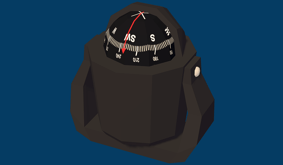
TRUE
FALSE
Congratulations, good answer!
TRUE. A magnetic compass will help the operator of a power-driven vessel to find directions.
Sorry, wrong answer.
TRUE. A magnetic compass will help the operator of a power-driven vessel to find directions.
Which of the following statements is incorrect regarding carbon monoxide (CO) poisoning?
Carbone monoxide can build up when two vessels are tied to each other.
Carbon monoxide poisoning occurs when you breathe too much carbon monoxide and it begins to replace the oxygen in your blood
It is important to run the engine at idle only in well ventilated areas in order to protect yourself and others from carbon monoxide poisoning
Symptoms of carbon monoxide poisoning are: hot, red and dry skin, rapid pulse, rapid and shallow breathing.
Congratulations, good answer!
The first three statements are true. But the symptoms of carbon monoxide poisoning are rather the followings: nausea, headache, mental confusion, dizziness or fainting, etc.. The symptoms can be mistaken for seasickness or the flu. If someone displays these symptoms, place them in fresh air immediately.
Sorry, wrong answer.
The first three statements are true. But the symptoms of carbon monoxide poisoning are rather the followings: nausea, headache, mental confusion, dizziness or fainting, etc.. The symptoms can be mistaken for seasickness or the flu. If someone displays these symptoms, place them in fresh air immediately.
Extinguish fires from combustible liquids such as gasoline, oil and grease
Extinguish fires from electrical equipment
To put the fish in
Extinguish A type fires
Congratulations, good answer!
The main purpose of the bucket is to extinguish type A fires which are combustible solids (wood, textile, paper, etc.).
Sorry, wrong answer.
The main purpose of the bucket is to extinguish type A fires which are combustible solids (wood, textile, paper, etc.).
Which of the following does not represent a distress signal?




Congratulations, good answer!
The third image is not a distress signal. It is a diving buoy that marks an area where scuba or other such diving activity is taking place.
Sorry, wrong answer.
The third image is not a distress signal. It is a diving buoy that marks an area where scuba or other such diving activity is taking place.
TRUE
FALSE
Congratulations, good answer!
FALSE. Most specific speed regulations are local ordinances or state laws. Many states have speed and distance regulations that determine how close you can operate to other vessels, the shoreline or docking area, and swimming areas. For example, some state regulations require that you maintain a no-wake speed when within 250 feet of shore or when within 100 feet of another vessel. Be sure to check with state and local authorities to determine what regulations apply to you.
Sorry, wrong answer.
FALSE. Most specific speed regulations are local ordinances or state laws. Many states have speed and distance regulations that determine how close you can operate to other vessels, the shoreline or docking area, and swimming areas. For example, some state regulations require that you maintain a no-wake speed when within 250 feet of shore or when within 100 feet of another vessel. Be sure to check with state and local authorities to determine what regulations apply to you.
Which statement is incorrect regarding the registration number?
The registration number must be display on the back of your vessel.
It is a combination of letters and numbers normally beginning with the abbreviation of the State in which the boat is registered.
It must be painted or apply as a decal with block style letters and numbers of at least 3 inches in height.
The color used for the letters and numbers must contrast with the hull.
Congratulations, good answer!
The registration number is actually a combination of letters and numbers normally beginning with the abbreviation of the State in which the boat is registered. You must display your registration number on the forward part of your vessel well above the waterline. You must paint the numbers or apply them as a decal, where law enforcement officials can easily read them. Use BLOCK style letters and numbers of at least 3 inches in height. The color must contrast with the hull.
Sorry, wrong answer.
The registration number is actually a combination of letters and numbers normally beginning with the abbreviation of the State in which the boat is registered. You must display your registration number on the forward part of your vessel well above the waterline. You must paint the numbers or apply them as a decal, where law enforcement officials can easily read them. Use BLOCK style letters and numbers of at least 3 inches in height. The color must contrast with the hull.
As a general rule, recreational boaters should put out 7 to 10 times the depth of the water plus the distance from the water to where the anchor will attach to the bow.
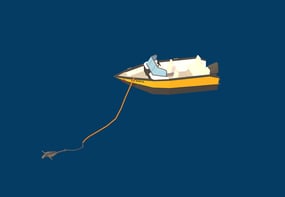
TRUE
FALSE
Congratulations, good answer!
TRUE. The amount of rode that you have out (scope) when at anchor depends on water depth and weather conditions. The deeper the water and the more severe the weather, the more rode you will put out.
Sorry, wrong answer.
TRUE. The amount of rode that you have out (scope) when at anchor depends on water depth and weather conditions. The deeper the water and the more severe the weather, the more rode you will put out.
Which illustration represents a mooring buoy among the following?


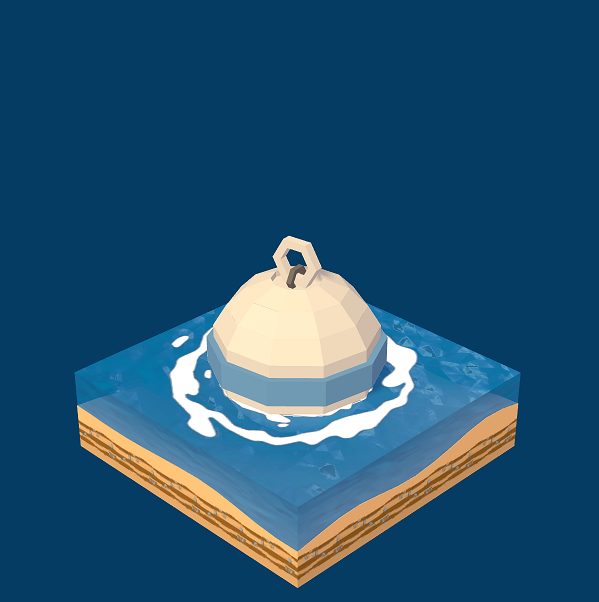

Congratulations, good answer!
The mooring buoy is white with a blue horizontal band. It is usually placed in marinas and other areas where vessels are allowed to anchor. It's the only buoy you may legally tie up to.
Sorry, wrong answer.
The mooring buoy is white with a blue horizontal band. It is usually placed in marinas and other areas where vessels are allowed to anchor. It's the only buoy you may legally tie up to.
It is forbidden to alter, deface or remove a HIN.
It is not mandatory to have a HIN on your boat.
The HIN must be permanently attached to the transom on the starboard side above the waterline.
The HIN is 12 digits long, beginning with the Manufacturer’s Identification Code.
Congratulations, good answer!
Boats built after 1972 must have a Hull Identification Number (HIN) permanently attached to the transom on the starboard side above the waterline.
Sorry, wrong answer.
Boats built after 1972 must have a Hull Identification Number (HIN) permanently attached to the transom on the starboard side above the waterline.
Stern
Freeboard
Hull
Bow
Congratulations, good answer!
The front of the boat is called the bow. The aft is the stern.
Sorry, wrong answer.
The front of the boat is called the bow. The aft is the stern.
Bowlight
Sternlight
One-way rear light
Masthead light
Congratulations, good answer!
The rear light is called the sternlight.
Sorry, wrong answer.
The rear light is called the sternlight.
To delimit a swimming area.
To warn of the presence of divers.
To locate a local hazard.
To anchor where the water is too deep for an anchor.
Congratulations, good answer!
The diving buoy marks an area where scuba or other such diving activity is taking place. The diving buoy is white and has a red flag with a white diagonal stripe, extending from the tip of the hoist to the bottom of the fly.
Sorry, wrong answer.
The diving buoymarks an area where scuba or other such diving activity is taking place. The diving buoy is white and has a red flag with a white diagonal stripe, extending from the tip of the hoist to the bottom of the fly.
Information buoy
Cautionary buoy
Control buoy
Hazard buoy
Congratulations, good answer!
It's a control buoy. It marks an area where boating is restricted. It is white with an orange circle located between two horizontal bands of the same color. Type of control is indicated in the circle, such as slow, no wake, anchoring, etc.
Sorry, wrong answer.
It's a control buoy. It marks an area where boating is restricted. It is white with an orange circle located between two horizontal bands of the same color. Type of control is indicated in the circle, such as slow, no wake, anchoring, etc.
When operating in a narrow channel, the navigation rules tell you to stay as much as possible in the middle of the channel.
TRUE
FALSE
Congratulations, good answer!
FALSE. When operating in a narrow channel, you must stay as far to the outer limit of the channel as practical on your starboard (right) side.
Sorry, wrong answer.
FALSE. When operating in a narrow channel, you must stay as far to the outer limit of the channel as practical on your starboard (right) side.
Pyrotechnic red flares, hand-held or aerial
Pyrotechnic orange smoke, hand-held or floating
Launchers for aerial red meteors
Parachute flares
Congratulations, good answer!
It is the rocket parachute flare. It creates a simple red star that rises up to 300m and comes down slowly with a parachute. It is easily seen from the ground or air, and burns for at least 40 seconds.
Sorry, wrong answer.
It is the rocket parachute flare. It creates a simple red star that rises up to 300m and comes down slowly with a parachute. It is easily seen from the ground or air, and burns for at least 40 seconds.
Which of the following vessels is not a human-powered pleasure craft?

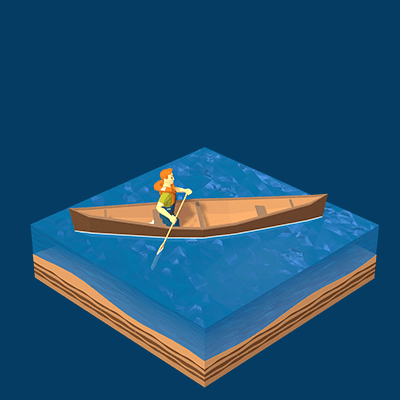


Congratulations, good answer!
The last image is not a human-powered pleasure craft. It is considered as a power-driven vessel since it is propelled by machinery.
Sorry, wrong answer.
The last image is not a human-powered pleasure craft. It is considered as a power-driven vessel since it is propelled by machinery.
Grapnel anchor
Plough anchor
Mushroom anchor
Danforth anchor
Congratulations, good answer!
It is the mushroom anchor. It is suitable where the seabed is composed of silt or fine sand. It is shaped like an inverted mushroom, the head becoming buried in the silt.
Sorry, wrong answer.
It is the mushroom anchor. It is suitable where the seabed is composed of silt or fine sand. It is shaped like an inverted mushroom, the head becoming buried in the silt.
Which of the following vessels is a human-powered pleasure craft?




Congratulations, good answer!
In this scenario, the canoe is considered as a human-powered pleasure craft since the person is using an oar. If you install a motor on the canoe, it becomes a power-driven vessel.
Sorry, wrong answer.
In this scenario, the canoe is considered as a human-powered pleasure craft since the person is using an oar. If you install a motor on the canoe, it becomes a power-driven vessel.
Port sidelight
Sternlight
Bowlight
Starboard sidelight
Congratulations, good answer!
The red forward light is called the port sidelight.
Sorry, wrong answer.
The red forward light is called the port sidelight.
What type of boat uses a blue light as navigation light?




Congratulations, good answer!
A flashing blue light indicates a law enforcement vessel. Do not impede its operation.
Sorry, wrong answer.
A flashing blue light indicates a law enforcement vessel. Do not impede its operation.
Which type of hull has a sharper entry into the water that provides for a smoother ride in rough water?
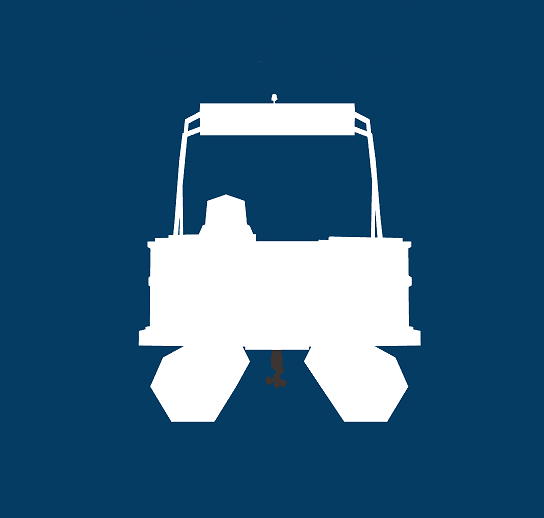
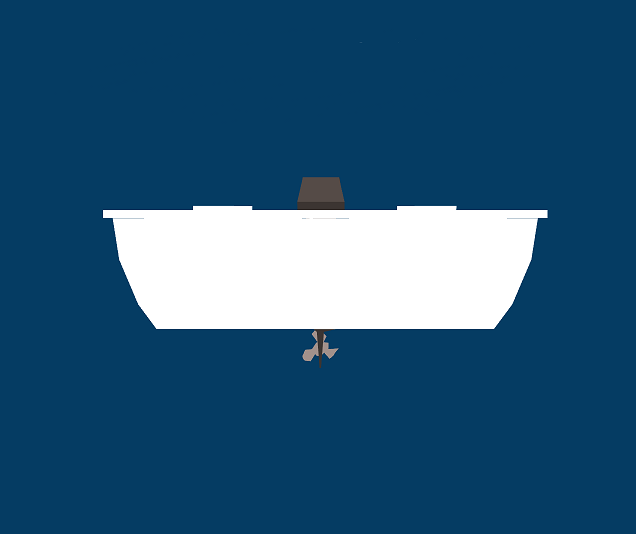

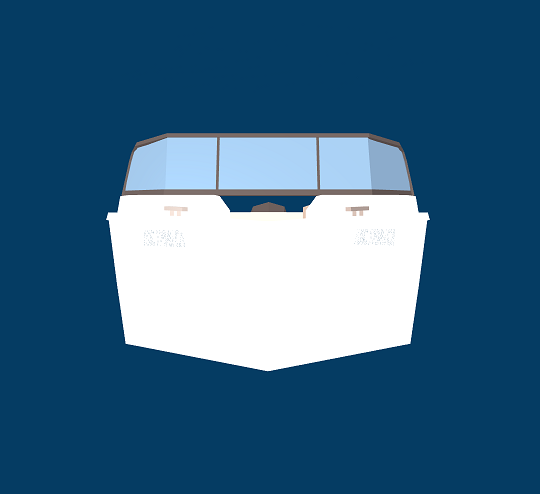
Congratulations, good answer!
The vee bottom has a sharper entry into the water that provides for a smoother ride in rough water. They do, however, require more power to achieve the same speed. Many runabouts use the vee-bottom design.
Sorry, wrong answer.
The vee bottom has a sharper entry into the water that provides for a smoother ride in rough water. They do, however, require more power to achieve the same speed. Many runabouts use the vee-bottom design.
TRUE
FALSE
Congratulations, good answer!
Inflatable vests only count towards the PFD/life jacket requirements if they are worn. However, they are not approved for all activities (e.g. riding on a PWC or participating in towed watersports).
Sorry, wrong answer.
Inflatable vests only count towards the PFD/life jacket requirements if they are worn. However, they are not approved for all activities (e.g. riding on a PWC or participating in towed watersports).
Inboard engines
Outboard engines
Stern drive
Jet drives
Congratulations, good answer!
Most recreational boats in the United States today use outboard engines and are less than twenty feet in length.
Sorry, good answer!
Most recreational boats in the United States today use outboard engines and are less than twenty feet in length.
Now that you’ve completed an excellent practice session, you can start your boating safety course and get your card in under 3 hours. You can even finish it in one evening if you have time. After that, you’ll be able to operate any motorized vessel anywhere in the U.S. Your boating license is valid for life and allows you to operate all recreational motorboats across North America. Sign up — it only takes a few seconds, and we’ll save your progress every time you come back.”
More than 2 000 000 boaters have trusted us
Ace Boater is the best way to get your boating license and to have the freedom to go boating when you want, by yourself or with friends and family!
